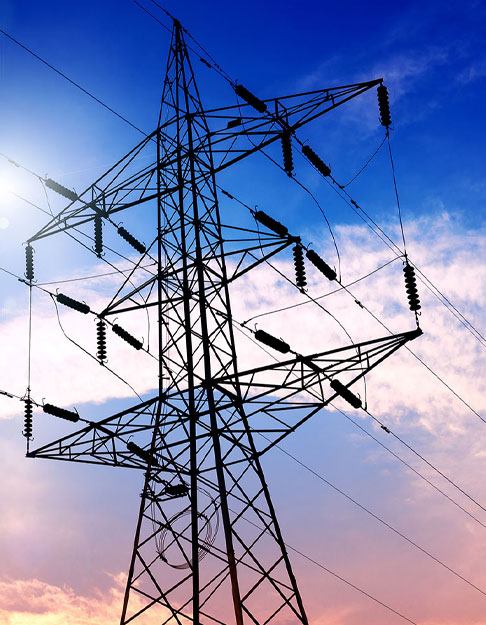Clean Power
Competitive hydrogen and syngas based power with carbon capture
Electricity accounts for about 1/3rd of GHG emissions worldwide; whilst decarbonization of power systems have focused on renewables and post-combustion carbon capture systems, future power systems also need to secure the availability of near zero-emission and net carbon-neutral power at a cost comparable to current utility-scale dispatchable power generation systems.
Gasification of the appropriate blend of feedstocks such as coal, petroleum waste (petcoke) and biomass, coupled with commoditized cost (US$ 12 – 15/tonne of CO2) pre-combustion capture of dense stream CO2 dense stream can be used to design a carbon neutral industrial system with scalable hydrogen and syngas based power modules. Such an industrial system offers scalable, flexible, competitive and affordable net carbon neutral and near-zero emissions power production at an industrial scale. The envisaged system is based on system engineering innovations and integration of commercially established individual sub-systems and can replace traditional coal-based baseload power and complement intermittent, variable and non-dispatchable renewable power. The project viability can be further enhanced through 45Q tax credits by compressing and transporting the captured dense stream CO2 for permanent sequestration in appropriate geological sites or for EOR in maturing oil fields, depending on the location.
Solutions
Dastur Energy is designing clean and cost-effective hydrogen heavy IGCC (integrated gasification combined cycle) power systems for its clients, to enable them to meet their ESG goals and also substitute expensive fossil fuel-based grid power for their internal consumption needs. The systems build on commercial scale established and emerging clean power generation technologies with high operating efficiencies and reliabilities, such as gasification, IGCC/hydrogen combustion turbines, super critical CO2 cycles, and dense stream carbon capture. Design of economically attractive clean power cycles includes integrating hydrogen polygeneration, carbon disposition strategy, switching between CO2 EOR and sequestration, and the design of a market resilient, product hedged and flexible business model.
CO and H2 rich syngas produced from the gasification of almost all ranks of coals (with the flexibility to add other feedstock like petcoke and biomass depending on market dynamics) can be used to generate power from IGCC/ hydrogen power islands, along with the co-generation of hydrogen and cost-effective dense stream carbon capture to the extent of 95%+. The co-generation of hydrogen offers several advantages:
-
The optionality to store the energy from coal to be stored as chemical energy of H2 in case of variability in power demand
-
In case of a decrease in power demand, syngas can be diverted to maximize H2 production through maximum water gas shift, followed by subsequent H2 storage
-
Reduction of CO2 emissions from power island (estimated to be around 370 kg/MWh), which is expected to reach nearly zero given the likely trajectory of future developments in burner technology for supporting up to 100% H2
-
Opportunity to participate in the hydrogen-based energy eco-system of the future
Industry Solutions
-
Oil Exploration & Production -
Refineries -
Chemicals & Petrochemicals -
Iron & Steel -
Clean Power -
Government & Institutions
Case Studies

Middle East Oil & Gas major
We have designed a coal and petcoke gasification based IGCC and hydrogen heavy power systems for our clients in the Middle East and India. These projects are coupled with H2 co-generation at less than US$ 1000/tonne with other benefits as follows:
- Highly efficient clean power production with CO2 emissions of only around 0.37 t/MWh (and near zero in the future) vis-à-vis 0.88 t/MWh for supercritical coal-fired plants
- Modular system design, which offers several benefits in terms of lower capital costs, lower construction time and onsite manhours
- Option to augment power production at marginal cost by utilizing the HP steam generated by gasifier operations.
- Cost-competitive clean power at sub-US$ 50/MWh (LCOE) which can be used to meet baseload power
- Poly-product design, offering the flexibility and resilience to steer through adverse market and demand scenarios
1 of 1
